Introduction
Specifications and Features
Announced earlier in the year, the K-3 II is the mid-term upgrade to the maker’s top-of-the-line K-3 model which already had impressive specs, including a stabilized 24-Mpix CMOS sensor, 27-point AF system (with 25 of those being horizontal and vertical line-sensitive, cross-type sensors), up to 8.3 fps continuous shooting, and a durable metal body designed for pro use. Although the new model no longer offers a built-in flash, improvements over its predecessor include an upgrade to the stabilized sensor platform.
Arguably the most significant upgrade, however, has been the introduction of Pixel Shift technology. Sometimes referred to as multi-shot technology, the sensor platform moves in one-pixel increments to capture red, green and blue data at each pixel location. Four shots are captured and combined into one image. As well as improved color, this technique results in improved detail and reduced moiré.
The new model also includes a built-in GPS receiver, recording not just location and time data, but also altitude and camera orientation. In addition, the K-3 II has a new Astrotracer feature, effectively combining the GPS and stabilized sensor-shifting capabilities to allow the camera to calculate the motion required to track and capture celestial bodies, such as stars and planets.
The Pentax K-3 II measures 5.2 x 3.9 x 3.1″ / 13.2 x 10 x 7.9cm and weighs 1.76 lb / 799.5g, body only. It is available now at $1035 (USD) for the body only.
- 24.3-Mpix APS-C CMOS sensor
- Anti-aliasing filter simulator
- Shake reduction and Pixel Shift resolution
- 27-point AF (25 cross-type)
- Prime III image processor
- 3.2-inch 1.03m-dot LCD
- Full HD 1080p video at 30/25 fps
- Expanded ISO 51200 max sensitivity
- 8.3 fps continuous shooting
- Built-in GPS, compass, and astrotracer feature
Measurements: Excellent overall performance
With an overall DxOMark sensor score of 80 points, the Pentax K-3 II achieves a good score overall with a relatively high 23.6-bit color sensitivity at base and a wide 13.6-stop dynamic range, but the low-light score of 1106 ISO is a little behind what we might expect for a recent APS-C sensor in a camera of this caliber. In terms of overall ranking in our database, the K-3 II lags marginally behind the best APS-C sensors in models such as the Nikon D5300 or the Sony A6000 for DR, noise, and color discrimination, but the results do not include sensor resolution or data from the multi-shot Pixel Shift option. It ranks in 50th place overall and in joint third place for Pentax models tested to date, including the medium-format Pentax 645D (we’ve yet to test the potentially impressive Pentax 645Z).
Comparison 1: Pentax K-3 II vs. Pentax K-3 vs. Pentax K-5 IIs: Balanced performance
Compared against its immediate predecessor, the K-3, it’s quite clear the upgraded model adopts a related sensor with much the same scores for sensor metrics and overall DxOMark ranking. Given the negligible difference in sensor dynamics between the K-3 II and the earlier K-5 II, which achieved 82 points, the increase in pixel count and therefore potential gain in resolution is a sensible trade-off.
Comparison 2: Pentax K-3 II vs. Canon EOS 7D Mark II vs. Nikon D7200: Competitive but marginally behind best-in-class sensor
As a pro-oriented APS-C model, the Pentax K-3 II can be pitched directly against such rivals as the Canon EOS 7D Mark II, the Sony A77 II, and to a lesser extent, the Nikon D7200. We’ve included it here rather than the Sony, but it, too, is a competitive performer.
The Canon sensor isn’t quite a match for the low noise floor of the sensor in the Pentax K-3 II, and this impacts the color sensitivity and DR at base and at low ISOs, though it competes at higher sensitivities.
Although very capable, the Nikon D7200 falls a little short of expectations in this segment. It lacks the durable build of its rivals, and while Nikon has upgraded the buffer, it still has a rather modest 6fps (12-bit) or 5fps (14-bit) continuous shooting capability. It also has just one central cross-type sensor at f/8, and it’s those kinds of features that limit its appeal to professionals. Notwithstanding those few restrictions that may or may not be relevant to your photography, with a DxOMark score of 87 points, the sensor in the Nikon D7200 is the best in its class.
Conclusion
It may lack the out-right sensor performance of the Nikon D7200 in single-shot mode, but the Pentax K-3 II isn’t far behind. Overall then, given the widest range of purpose-built APS-C lenses, the durable build, impressive specifications, and overall capability, the Pentax K-3 II is an attractive and genuinely intriguing option to the usual Canon and Nikon models.


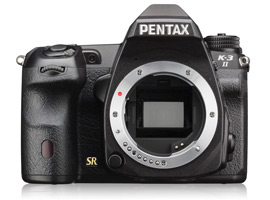



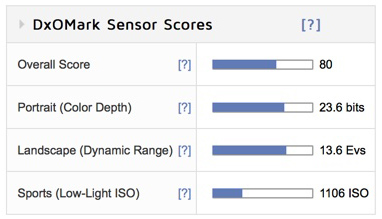
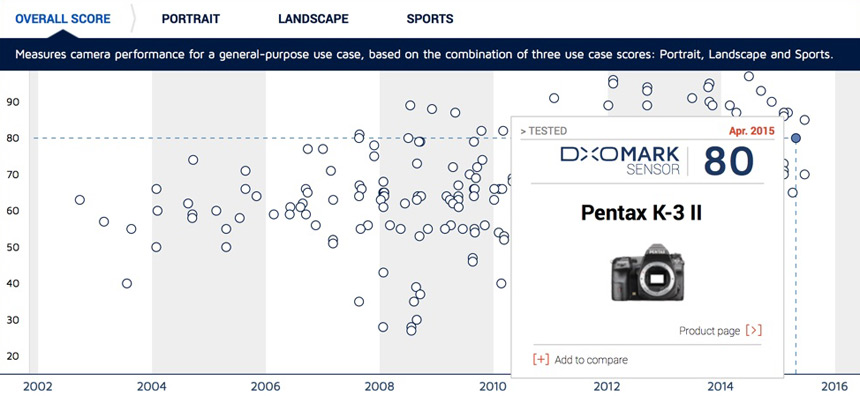
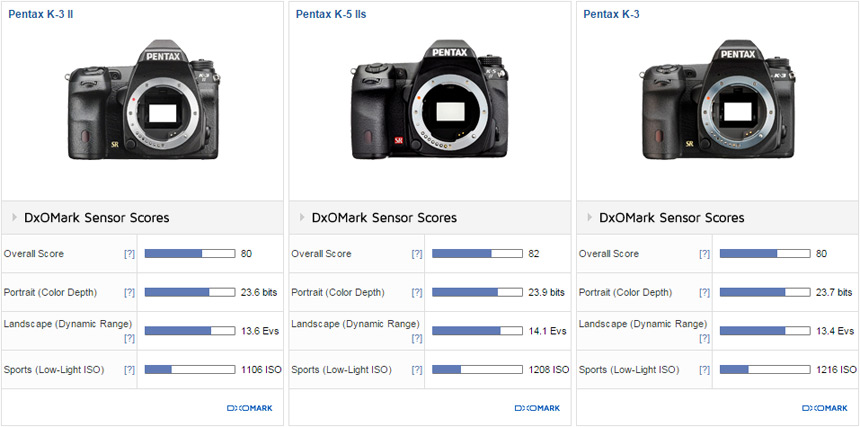
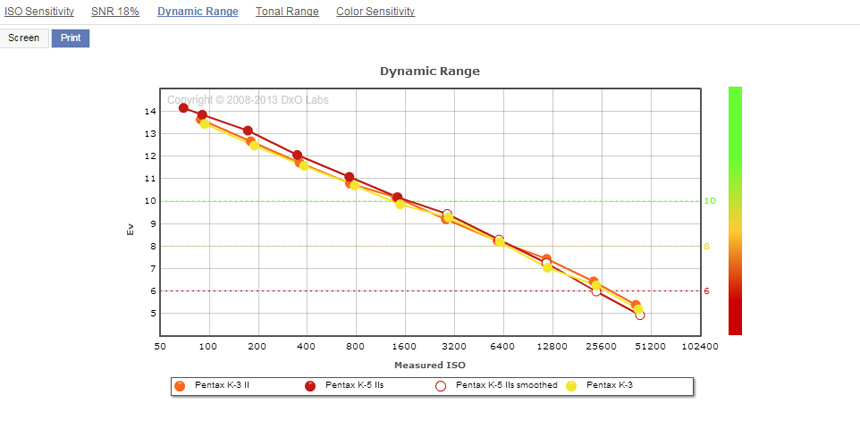
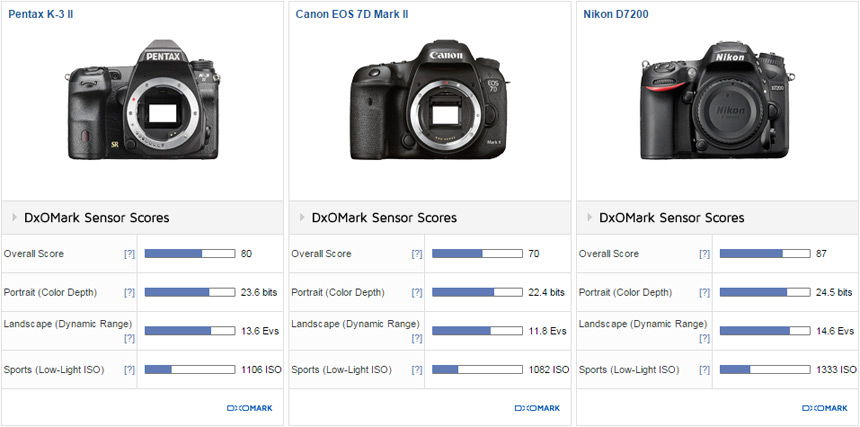

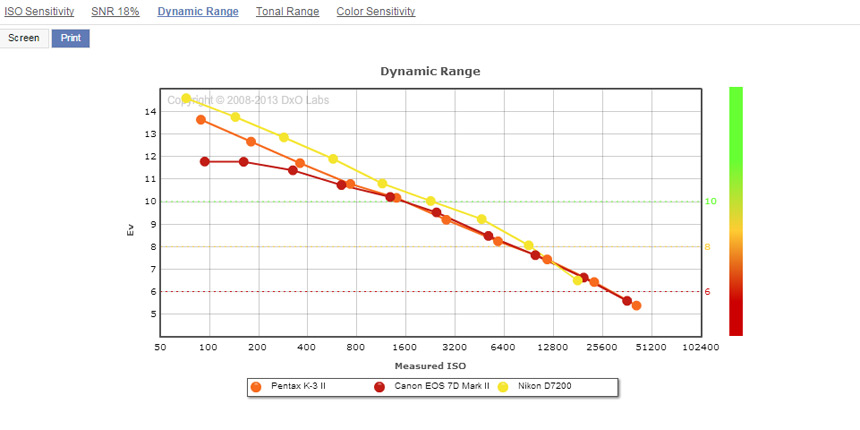
DXOMARK encourages its readers to share comments on the articles. To read or post comments, Disqus cookies are required. Change your Cookies Preferences and read more about our Comment Policy.